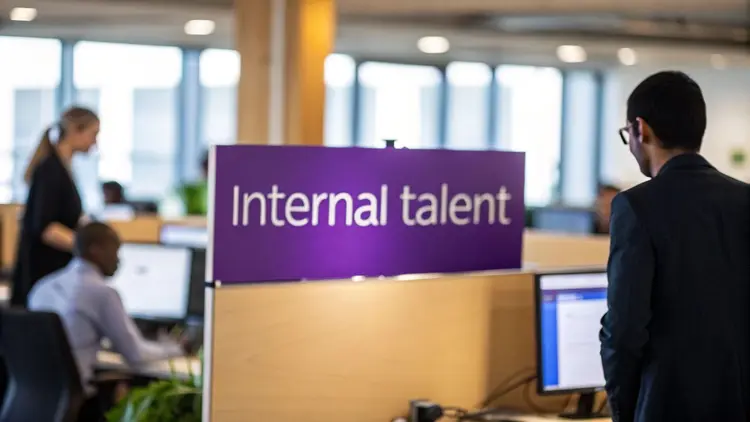Industry Trends
What is Recruitment Automation and How it Will Shape the Future of HR

Technology is changing the HR landscape day by day.
Recruitment automation is one example of business technology that is revolutionising how HR works. As we all know, recruitment is both time-consuming and laborious to conduct. Automation makes it easier, more efficient, and more effective.
In this article, we’ll have an in-depth discussion of what recruitment automation is, why you should apply it in your business, and how it will shape the future of HR.
What is Recruitment Automation?
Recruitment automation is a process by which common HR tasks are delegated to advanced software and other technology tools.
A wide variety of HR systems can already automate common recruitment-related tasks such as campaign management, lead processing, social media marketing, recruiting analytics, and more.
Instead of an overworked hiring manager juggling different responsibilities independently, all of these menial tasks are taken care of by the software. Thanks to automation, managers can concentrate on activities with more leverage.
Advantages of Recruitment Automation
Now that we looked at what recruitment automation is, we can discuss the different advantages that it offers.
1. Reduce Time to Hire
Automated recruitment software vastly minimises the most time-consuming tasks of the hiring process, such as job posting, pre-screening, assessments, and more. Because of this, hiring time is drastically shortened.
A shorter hiring time has the direct benefit of quickly filling in essential company positions, which already have a positive impact from day one. In addition to this, a quicker hiring and onboarding process reduces the time it takes for the employee to adjust to the new environment, allowing them to function efficiently in the shortest time possible.
2. Improve the Candidate Experience
Automation isn’t only good for employers – it also benefits the candidates.
With automated processes, candidates can expect a smooth onboarding experience. Functions such as conversational AI and automated communications lets candidates know their status and where they are in the process. The waiting time for the hiring decision is also cut short, a win-win for everyone indeed.
3. Minimise Human Errors
Human error is an expected yet undesired outcome of human work during the recruitment process. This includes misplacing a file, making typos in your official correspondence, and accidentally skipping over a suitable candidate.
Although relatively rare in well-managed companies, human error can be disastrous to the recruitment process. Forgetting to communicate with the applicant during crucial parts of the hiring process could cost you your talent, just like emailing the wrong email address or calling the wrong phone number. When these things do happen, the consequences can be significant.
This is where automated recruitment systems come into the picture. Good recruitment software will execute exactly what it’s supposed to, drastically minimising human error.
4. Maximise Productivity
Because automation can take care of menial, repetitive tasks, it frees up your time to be more productive in other areas that actually require human supervision.
These areas include developing positive connections with your candidates, strategising your recruitment marketing efforts, and actively enhancing positive company culture.
Remember, while automation software may be getting smarter by the year, there’s still no replacement for real human engagement in the workplace.
5. Reduce Unconscious Bias
Unconscious biases are preconceptions about a group of people created without our awareness. Multiple studies have shown that unconscious bias in the workplace can hinder minority groups from attaining their career goals.
Unlike humans, automation software has no bias. Letting automated systems handle parts of the hiring process will minimise unconscious bias and allow individuals to be assessed purely on their skills, background, and experience.
Moreover, recruitment software like SeeMeHired.com has specific Diversity and Inclusion modules that include a blind hiring feature. Data that may suggest someone’s ethnicity, nationality, or appearance is completely removed from the shortlisting process, which means hiring managers can make the final selection based on qualifications alone.
6. Find the Best Talent
An automated recruitment system can sort through extensive amounts of information and make thousands of calculations at once. With this capability, a recruitment system can help make optimal decisions for choosing candidates.
Use Cases for Recruitment Automation
1. Social Media Hiring
Social media platforms are now also becoming recruitment marketplaces, with job ads and professional groups becoming standard.
It's not just these major networks, too. Industry-focused platforms like GitHub and Dribbble are gaining popularity and increasingly becoming places where people look for jobs. In fact, global statistics have shown that 98% of recruiters use LinkedIn to look for talent.
It only makes sense that you focus your recruitment efforts in these spaces where there’s a lot of user traffic. With recruiting automation software, you’re not just limited to job boards – you can also include a list of social media sites to post your job vacancies to source more and better talent.
Also, automation software can make hiring more targeted by analysing your successful hires and advertising to similar audiences. They can also aggregate data from various social networking sites for future use.
2. Instant Multiple-Channel Job Posts
Competition for talent is tough nowadays. Thus, it’s crucial for any recruitment effort to utilise a wide variety of job boards and hiring platforms.
However, this is easier said than done. There are so many boards and networks on the internet so it takes a lot of time to list jobs and manage the relevant platforms.
Recruiting automation systems like SeeMeHired.com can instantly post job vacancies across multiple significant boards such as Indeed, Monster, and more, saving you a lot of time and exposing your job to the biggest audiences possible.
3. Data-Driven Selection Methods
Unlike human hiring managers, automated recruitment software can easily consider extensive information when assessing candidates for a position.
This capability is most often applied during the pre-screening process. Recruiting automation software can use candidate data to pre-screen the applicant pool. Only the broad qualifiers will make it to the actual hiring process.
This pre-screening is done by evaluating the applicants’ characteristics, skills, experience, and other contextual information. Those who do not meet the standards will be instantly disqualified, saving both the candidate’s and the recruiter’s time.
Aside from information about the candidates themselves, automated recruitment software also considers other helpful details such as your average time to hire and turnover rate. These details can be used to attract top candidates and analyse how long specific phases of hiring are – all to optimise your processes going forward.
4. Automated Communications
One of the most significant factors that discourage candidates during the hiring process is the lack of recruiter communication.
Statistics from Hireology indicate that a lack of response from the recruiter after 72 hours results in the applicant looking someplace else, effectively losing the opportunity before the recruiter could even schedule an interview. Communication in the form of after-interview feedback is also more likely to enhance the candidate-recruiter relationship.
Although communication plays a massive role in the recruitment process, it’s not always easy to do, especially when you’re hiring for multiple positions with many candidates for each.
Recruiting automation software solves this problem by handling things like interview scheduling, recruitment coordination, and even simple conversations about guidelines and policies.
With the automated communication functions of your recruitment software, you can improve the candidate experience and reduce the chance of losing candidates throughout the hiring journey.
5. Reserve Talent Pool
The majority of your hiring efforts will probably focus on filling current positions within the company. However, it would pay to keep track of candidates with a good profile in today’s fast-paced job market.
After all, even though they may not be the right one for the current vacancy, they could be the perfect candidate for the next open position.
With recruitment automation tools, you can redirect candidates with this kind of qualification to a hiring pool of notable past applicants. This allows you to be able to immediately contact them if a job vacancy within your company matches their skill set.
This way, your hiring efforts become proactive instead of reactive. A proactive hiring process will shorten your hiring time even further and allow you to handpick the right person for the position from a pool of pre-selected profiles.
6. Candidate Onboarding
Candidate onboarding is one of the most sought-after features of any automated recruiting software. While it’s an aspect of recruitment that includes a human element, recruitment software can automate much of the process to save time and enhance the candidate experience.
For example, standard communication before, during, and after the interviews can be handled by software.
Using Recruitment Automation to Shape the Future of HR
Recruitment automation is here to stay, not just because it’s suitable for companies, but because it’s good for candidates as well.
By taking over repetitive, menial tasks and producing consistent, error-free output, an automated recruitment system frees up company resources and saves valuable time.
With a more productive and proactive HR team, companies can then focus on creating a positive culture, enhancing business relationships, and developing more sustainable operations.































